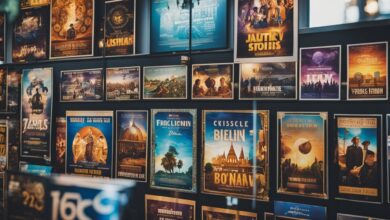Kinsie Ali: Why diverse representation in media matters – Post Bulletin

When we stream, scroll, and watch, we see reflections of ourselves and the world around us. So many stories, for so long, have left out people from underrepresented communities or, worse, reduced them to damaging stereotypes.
To this very day, many individuals in the most underserved communities feel like they cannot see themselves genuinely represented in the media they consume. It goes beyond just trying to fill the diversity quota; it lends voice to the voiceless and allows light to shine upon experiences that have long been suppressed. It demonstrates that diversity is not about checking boxes but rather about creating stories that broadly resonate across cultures and honor what makes us different.
Equitable representation in media goes beyond basic inclusion; it is an opportunity to empower, transform old narratives, and create a more inclusive society as a whole. It validates and motivates various audiences all over the world by authentically reflecting global diversity on television and in the media, allowing people from all walks of life to feel validated, inspired, and understood.
For me, it was a turning point when I first encountered diversity and representation in the media. There is a distinctive feeling of validation that comes from seeing a person who looks like you in a role you aspire to be, and during those moments, you truly believe, “I can be that too.”
This is a crucial feeling, especially for young people of color who must constantly navigate their identities in a society that all too frequently tells them they do not belong. Diverse representation in the media possesses a profound influence; it empowers underrepresented groups and promotes understanding among varied audiences.
Growing up in a predominantly white town, I continually found only a few characters in films, TV shows, or literature that mirrored me or discussed my experiences as a young person of color. This absence of representation made me feel isolated and questioned my sense of self.
However, as time went on, I began to encounter diverse characters in prominent roles — narratives that shattered stereotypes and offered rich, multi-dimensional portrayals. This change in my experiences allowed me to validate my identity and have the chance to not only see my experiences reflected on screen but also help break down preconceived notions for viewers from various backgrounds.
Every child deserves to see role models in media — characters who look like them and whose stories reflect their own. When diverse stories thrive onscreen, we challenge the limiting narratives that have controlled our culture for too long. This portrayal opens up a whole world to young viewers, validating their experiences, affirming their stories, and demonstrating that their ambitions are attainable.
Diverse representation in media is more than just inclusion; it is a fundamental growth of our collective awareness of the human experience, enabling the next generation to embrace and love who they are.
It is equally essential that those who are frequently in the majority experience and value the diversity in their environment. Exposure to a variety of varied ideas and cultures can be extremely beneficial for individuals who are frequently in settings where they see other people who are similar to themselves. These major benefits include expanding their perspective, gaining insight into cultures and experiences that differ from their own, encouraging creativity by exposing them to diverse ways of problem-solving, and promoting personal development through reflection.
Other added benefits would include fostering empathy and the breaking down of stereotypes and biases among people in the majority. A person’s communication skills improve with exposure to diverse perspectives, therefore making one more prepared for a globalized society. Ultimately, diversity, if genuinely felt and embraced, empowers and improves communities through the development of collaboration and inclusivity.
The impact of diverse representation in media cannot be overstated. It is critical not only for historically underrepresented groups but also for developing empathy and understanding in all audiences. The stories we tell and consume affect not only our perceptions of the world but also of ourselves. By embracing inclusive storytelling, we pave the way for media that reflects our society’s depth and complexity.
We have a responsibility to support media that reflects diverse voices, ensuring that people from all backgrounds are represented and valued. The more we celebrate and amplify these voices, the closer we get to a medium that truly reflects the world we live in.
Kinsie Ali is a junior at Mayo High School. Send comments on teen columns to Jeff Pieters,
.



